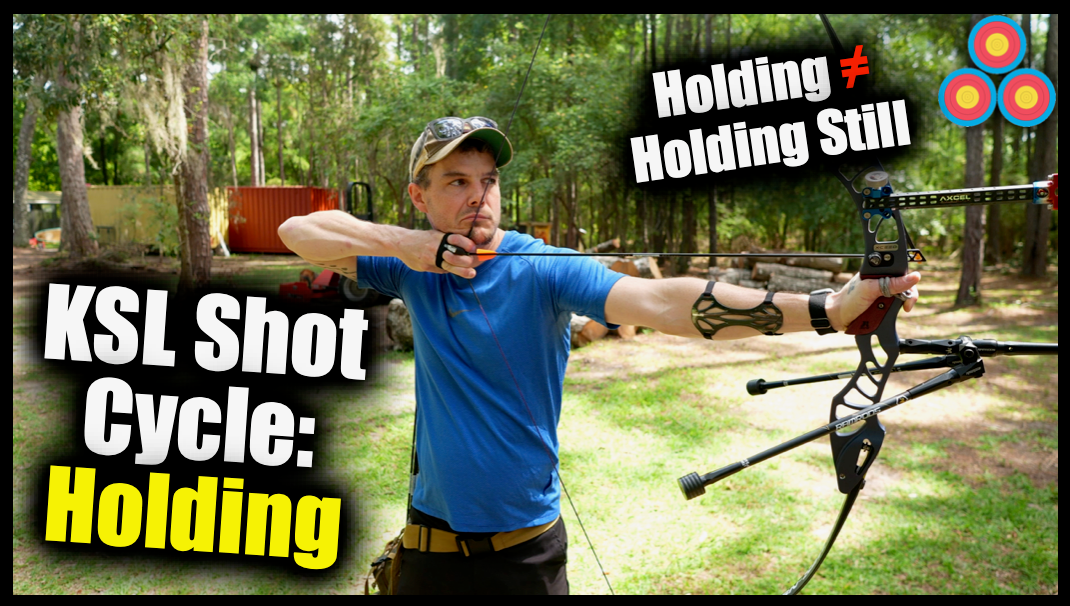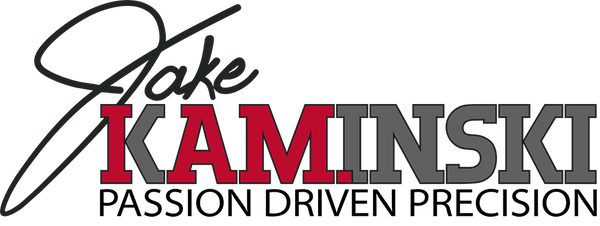
“Holding” in the KSL Shot Cycle: It’s a Yield, Not a Stop
Share
Form Talk with Jake Kaminski
If you’ve ever heard “holding” and pictured yourself freezing at full draw… we need to talk. In the KSL Shot Cycle(Coach Kisik Lee), holding is not a timeout. It’s a brief, purposeful transition, the moment you finish transfer, brace the bow, lock into alignment, and change your mind from getting to full draw to executing the shot. Think of it as a yield, not a stop.
Below I’ll break down what holding is (and isn’t), why it matters for tens especially under pressure and how to train it across recurve, barebow, and compound.
-
Holding ≠ pausing. It’s the short transition after transfer; when you’re fully “in the back” and mentally switched to execution.
-
Treat holding like a California roll at a stop sign: you almost stop, enough to confirm position and intent, then flow right into expansion.
-
Stopping at full draw invites fatigue, creep, collapse, and negative thoughts. A clean, continuous yield keeps tension building and confidence high.
What Most Archers Get Wrong About “Holding”
When people hear holding, they imagine:
-
Coming to full draw
-
Pausing to aim or “wait for calm”
-
Then trying to set the clicker or fire the release
That interpretation creates problems:
-
The bow never gets tired, but you do.
-
Stopping invites creep (loss of draw length/tension).
-
Creep makes clicker activation harder and encourages pluck/collapse at release.
-
Mentally, you give space for “I’m shaking… this isn’t steady…” and your shot quality drops.
What Holding Really Is (KSL Shot Cycle)
In Coach Lee’s framework, holding is simply the phase after you’ve:
-
Reached full draw and anchored
-
Transferred (load into the back)
-
Are fully braced and aligned (“inside the bow”)
At that instant you’ve committed:
“I’ve done my setup. Now I execute.”
From here, your attention narrows to a single forward thought: expansion through the clicker (recurve), your clean release sequence (barebow), or your activation path (compound hinge roll, trigger squeeze, back tension). There is no literal stop, only a micro-yield as you change gears.
The California-Roll Analogy
You slow nearly to stillness (just enough to confirm position and intent), then flow, smoothly into expansion. No freezing. No waiting for perfect. Continuous intent, continuous tension.
Why Holding Matters for 10s, Especially Under Pressure
-
Cleaner execution: When holding is achieved, your mind is single-tasked on expansion/activation. Less noise, fewer variables.
-
Consistency in wind/pressure: A braced, aligned system responds predictably to your input.
-
Confidence loop: Because you’ve confirmed transfer/alignment, you remove the “Did I get into my back?” doubt that kills trust at release.
-
No creep: Continuous intent keeps the system building rather than leaking tension.
How to Feel True Holding (Across Disciplines)
Recurve (with clicker)
-
Cue: “Transfer, brace. expand only.”
-
At anchor, feel the back engage (lower trapezius/lats), scapula set, bow is braced through your torso into the bow hand.
-
The moment that’s true, your attention shifts to expansion through the clicker. You’re not waiting for stillness; you’re creating it with structure and flow.
Barebow
-
Cue: “Transfer, brace, commit to the release routine.”
-
After transfer, your single task is your chosen release pattern (relax-to-release, rotational back tension, etc.).
-
Maintain the continuous yield, no freezing to “aim harder.” Your alignment is your stability.
Compound
-
Cue: “Set, brace, start the engine.”
-
Once the back is on and alignment is set, your mind narrows to your activation path (hinge roll, tension increase, or trigger squeeze).
-
The “yield” lets you confirm structure; the shot keeps moving.
Simple On-Range Drill: The 3-Beat Flow
Count in your head to feel the gear change without stopping:
-
“Set.” (Anchor and transfer, feel the back take load, bow is braced.)
-
“Hold.” (This is the yield, a half-beat confirmation, not a pause.)
-
“Go.” (Immediate expansion/activation into the finish.)
Run blank-bale first. Then add a target face. If you catch yourself waiting at “Hold,” shorten it to a half-beat, it should feel like a flowing handoff, not a park-and-wait.
Common Pitfalls (and Fixes)
-
Pitfall: You freeze to “aim better.”
Fix: Broaden your cue: “Set, brace, go.” Aiming rides execution, don’t trade motion for stillness. -
Pitfall: You keep fidgeting at anchor (“micro-adjusting”).
Fix: Separate jobs. Before holding: posture/grip/head/string picture. At holding: no more checks—only execution. -
Pitfall: Clicker panic / hard wall with the release.
Fix: Practice the half-beat yield into a soft, continuous expansion. If it feels abrupt, you likely skipped transfer. -
Pitfall: Negative self-talk (“I’m shaking!”).
Fix: Pre-load your internal script: “Transfer, brace, expand only.” The script locks attention forward and shuts out noise.
Quick Checklist
-
☐ Anchor achieved without tension in the neck/forearm
-
☐ Transfer complete (load in the back; scapula set)
-
☐ Bow is braced—pressure line through riser feels solid
-
☐ One thought only: expand/activate
-
☐ No freeze, no creep, yield → go
-
☐ Follow-through finishes itself
Want the Full Playbook?
If terms like transfer, bracing the bow, and stepping inside the bow are new, grab Total Archery: Inside the Archer by Kisik Lee and Tyler Benner. It’s the reference I recommend for learning and applying the KSL Shot Cycle in depth. (Available on my site, JakeKaminski.com)
Final Word
“Holding” is the mental and physical handoff from set-up to execution. When you treat it as a yield not a stop you remove doubt, prevent creep, and let the shot break with quiet confidence. Even on a shaky day, that flow puts arrows in the middle.

